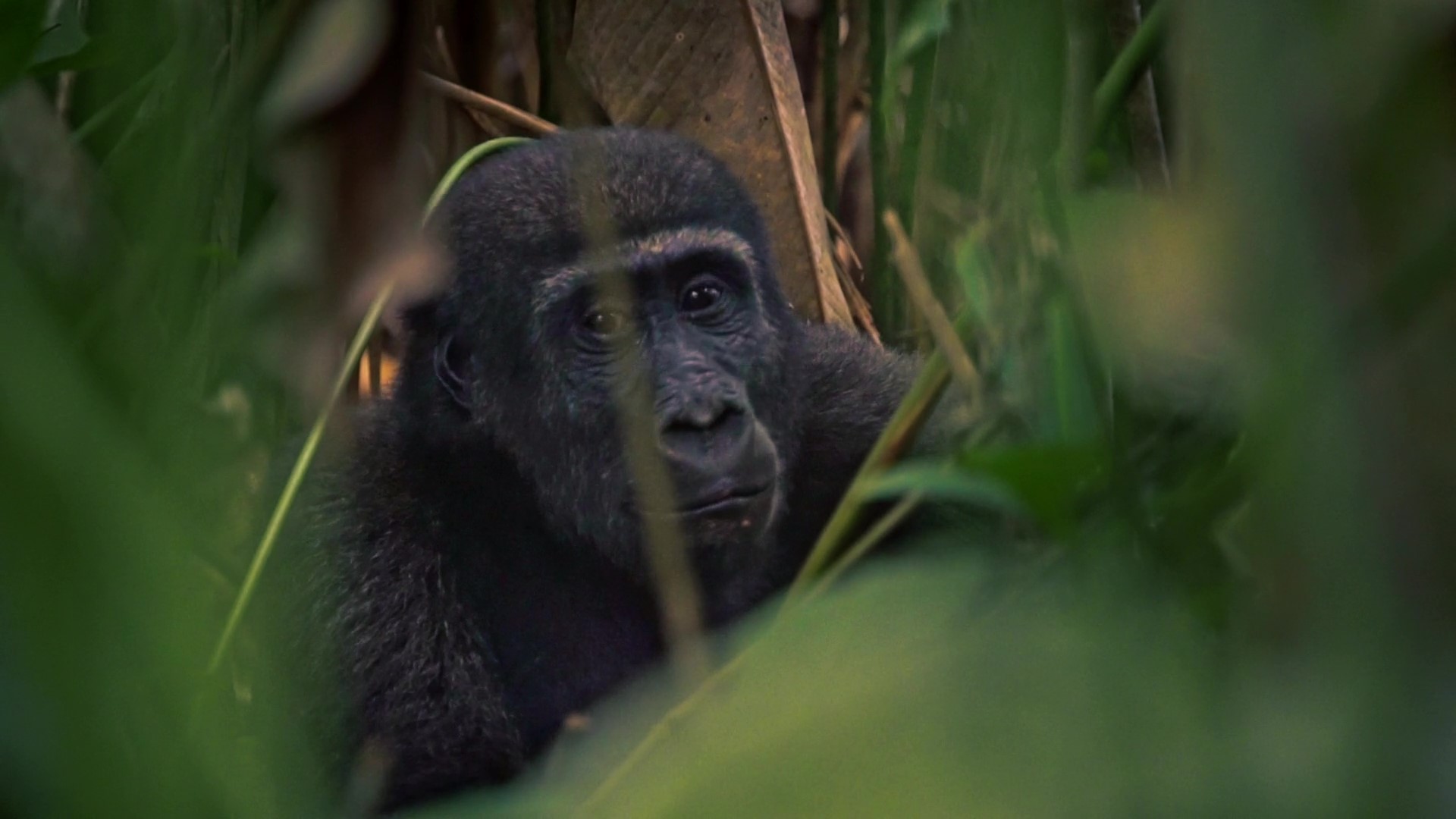Chimpanzee Habituation Experience—Your FAQs Answered
This article provides answers to some of the common questions about the chimpanzee habituation experience in Kibale National Park. The chimpanzee habituation experience is a process of accompanying researchers and habituators who follow a group of chimpanzees in the forest and observe their natural behaviour without disturbing them. The goal is to make the chimpanzees accustomed to the presence of humans without changing their normal activities and lifestyle.
The chimpanzee habituators begin their day between 5:30 and 6:30 in the morning, when the chimpanzees leave their nests, and follow them until they make new nests in the late evening. The chimpanzee habituation experience in Kibale National Park is mainly offered in the low seasons of March to May and November when there are fewer tourists in the park.
Where to find Chimpanzees in Uganda
Kibale National Park in Uganda has the largest population of habituated chimpanzees in Africa, making it a prime destination for chimpanzee lovers.
Chimpanzees share about 98% of their DNA with humans, so they are brilliant and alert animals. They have a complex communication system that includes vocalizations, gestures, and drumming on tree trunks. When they sense a potential threat, they will warn each other by making loud noises. Therefore, visitors should be careful and respectful when in the forest with the chimpanzees.
Kibale National Park is a tropical rainforest located in western Uganda. It is a biosphere reserve that hosts over 13 species of primates, including chimpanzees. The forest borders Queen Elizabeth National Park and attracts various wildlife, such as forest elephants, giant forest hogs, duikers, warthogs, waterbucks, bushbucks, and many more. The park covers parts of Kibale District, Kabarole District, and Fort Portal City.
Where to book for Chimpanzee Permits
To book chimpanzee habituation permits in Kibale National Park, contact the Uganda Wildlife Authority. However, this can be a tedious process due to the high demand for permits. That is why Encounter Africa Safaris offers to book the permits for you, as long as you provide us with your travel dates and the number of people in your group.
Chimpanzee habituation permits are limited to ensure that the forest is not overpopulated by visitors. Too many people in the forest can damage the vegetation that the chimpanzees feed on. Moreover, the chimpanzees are still undergoing habituation, which means they are learning to tolerate human presence. Exposing them to large crowds can hinder this process.
How much does a Chimpanzee permit cost?
A chimpanzee habituation permit in Kibale National Park costs $300 for foreign non-residents, $300 for foreign residents, and 150,000 shillings for East African residents. If you are interested in booking a permit with us, please send us some details, and we will get back to you soon.
Kibale National Park is home to one of the most exciting experiences you can have in Uganda – chimpanzee habituation. To get the most out of this experience, it’s essential to prepare well.
Upon arrival at the Kanyanchu Visitor Center, a briefing from the ranger guide, researchers, and other habituators will provide you with the guidelines needed for chimpanzee trekking. These guidelines include maintaining a distance of around 8 meters from the chimpanzees, refraining from feeding them, and not dumping them in the forest. Additionally, keep an eye out for other primates and bird species that call the forest home.
As you locate the chimpanzees, take in their feeding behaviour and observe how they relate to each other. Capture these moments through photographs to remember your chimpanzee habituation experience in Kibale National Park.
Kibale National Park offers a range of accommodations, from luxury to budget options. Whether you’re looking to stay in the park, on the outskirts, or in Fort Portal City, there’s an option for everyone.
Luckily, chimpanzee habituation in Kibale National Park is not too strenuous. The park’s topography is fairly flat, with no need to hike any ridges or hills. During rainy seasons, the forest may be wet, but trails are still passable. You may need a pair of binoculars during these wet seasons, as chimpanzees feed from tree branches, not close to the wet ground.
In summary, chimpanzee habituation in Kibale National Park is an incredible experience that should not be missed. Follow the guidelines given by the ranger guide, observe the chimpanzees’ behaviour, and capture these moments through photographs. With a range of accommodation options and manageable terrain, Kibale National Park is an excellent destination for chimpanzee habituation.
How To Get To Kibale National Park For Chimpanzee Habituation
Two routes are available from Kampala City or Entebbe Airport to Kibale National Park for chimpanzee habituation
By Road
Kampala to Mubende to Fortportal
This road trip is the northern route, taking about 300km of Tarmac road to go through Fort Portal City then proceed on Murram Road to Sebitori Forest Camp
Kampala to Mbarara to Kamwenge
This is the southern route heading to Kanyanchu.
By Air
Each day, there are scheduled domestic flights to depart Entebbe Airport and Kajjansi Airstrip to Kasese Airport. You need to hire a transfer vehicle from the airport to Kibale National Park.
Charter flight arrangements can be made upon request. Bookings must be made before travelling for chimpanzee accommodation.
Certainly! Here’s a more constructive version of the text:
What is the minimum age requirement for chimpanzee habituation in Kibale National Park?
For the safety and comfort of both the children and the chimpanzees, the minimum age requirement for chimpanzee habituation in Kibale National Park is 15 years and above. This is because the activity requires long or short walks to locate the chimpanzees, which may be exhausting for younger children. Additionally, chimpanzees can sometimes exhibit teasing behaviour that may frighten children under the age of 15. The forest can also be rough terrain, so it’s important to exercise patience before locating the chimpanzees.
What activities are available for children in Kibale National Park?
Children under 15 years of age can still enjoy various fun and interactive activities in the park that are suitable for their delicate age. They can embark on short walks to explore the ecosystem and its inhabitants, engage in games like cyanotype, photography, and pond dipping, and learn from professional children rangers during educational sessions that last between 1-2 hours. This allows them to appreciate and learn about the environment while having a great time.
How long does chimpanzee habituation take in Kibale National Park?
As chimpanzees are mobile creatures, the duration of chimpanzee habituation in Kibale National Park varies. Depending on the forest conditions, it could take anywhere from 2–4 hours to locate them. Patience is, therefore, a virtue when engaging in this activity.
How many individuals can participate in chimpanzee habituation in Kibale National Park?
To ensure the chimpanzees are not overwhelmed by human presence, only four tourists are allowed to participate in chimpanzee habituation with researchers. This also ensures that the activity is more intimate and allows for a more meaningful experience.
Are there discounted chimpanzee habituation permits for Kibale National Park?
Unfortunately, there are no discounted chimpanzee habituation permits for Kibale National Park. However, the experience is worth the cost, as it provides a unique and unforgettable opportunity to observe and learn about these fascinating creatures.
What is the chimpanzees’ diet?
Chimpanzees are primarily vegetarian creatures. However, in times of drought or scarcity, they may feed on monkeys. They also supplement their diet by eating ants. Understanding their diet allows us to appreciate and conserve their natural habitat in Kibale National Park.
What to pack for a Chimpanzee Habituation?
If you’re planning to go for chimpanzee habituation in Kibale National Park, we recommend that you pack some essential items to make your experience more memorable.
A pair of binoculars will help you get a clearer view of the chimpanzees, especially when they’re up in the trees or hiding in the bushes. A flash-less camera will allow you to take photos when permitted by the researchers. Wearing long-sleeved shirts and trousers in colours like khaki will protect your skin from the harsh conditions of the forest.
Remember to bring insect repellent to keep stinging insects away from your body and a cap or large-brimmed hat to protect your hair from dripping water off the leaves. Don’t forget to carry an extra fully charged camera battery, a torch, and toiletries in case your lodge doesn’t provide them.
A notebook and pen will allow you to note down every activity that the chimpanzees do while following them with the researchers. Bring a water bottle to carry the drinking water that you need while in the forest and some hard cash for any domestic transactions since credit cards are rarely used in the countryside.
What are the guidelines for chimpanzee habituation in Kibale National Park?
- Do not litter the forest with any wraps, as this alters the forest’s nature, which is the sole food basket for the chimpanzees. Do not eat in front of the chimpanzees because they may be forced to grab it from you. Besides, they are wild animals that should look for food.
- In case you want to defecate, ask your ranger guide to dig a hole about 30 meters deep and cover it well beyond recognition. This is to maintain proper forest hygiene and prevent chimpanzees from getting curious about what is buried.
- Never provoke the chimpanzees because they can charge just like humans. Children below 15 years are not allowed to do chimpanzee habituation.
- When you locate the chimpanzees, try to keep a gap of about 8 meters from them for clearer observation and to reduce the chances of transmitting any possible infection to them.
- Do not enter the forest for habituation without a ranger guide because they are more familiar with the forest and understand the chimpanzees’ behaviour better.

